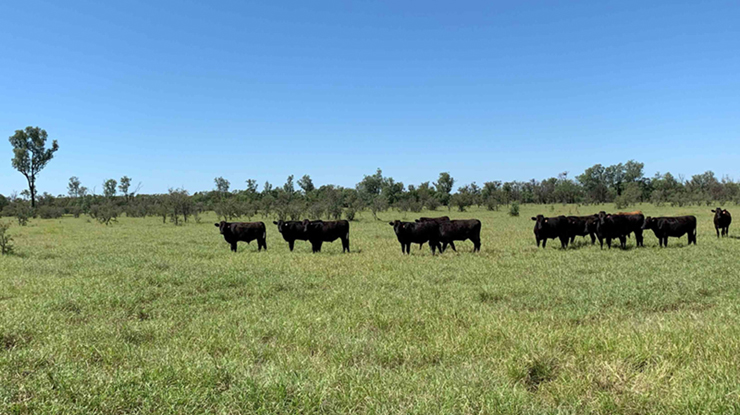
Caption: Atherton Tablelands producer Greg Brown with MLA Managing Director Jason Strong at the Mareeba BeefUp Forum.
Global demand for beef is as strong as it’s ever been and is projected to go even higher, according to MLA’s global market insights. However, worldwide production is also set to rise, and the competition from both old and new proteins has never been so intense.
MLA Managing Director Jason Strong gave an overview of both the opportunities and challenges for Australian beef at the latest BeefUp Forum, held recently at Mareeba in northern Queensland.
Even though there’s a massive 50 million tonne demand globally for beef, Australia produces only 3% of the total. That means intensifying competition from pork and chicken – which can be produced faster and in smaller environments – and from alternative proteins, is something the Australian beef industry must watch very closely, Jason explained.
“We have to be conscious of the position alternative proteins are taking up in the market,” he said.
“However, global protein demand is currently unmet and they present opportunities for filling the void. While we can’t be naïve about alternative proteins as a competitor, there’s some opportunity before us in this space.”
One key opportunity comes from the long list of ingredients in alternative proteins – additives, preservatives, salt and a range of other components.
“Our product has only one natural ingredient,” Jason said.
“Telling people that story is an opportunity we can’t miss.”
China’s potential
China is now Australia’s third largest market, and with a huge population and growing affluence, it’s likely to stay that way. The biggest opportunity for the Australian red meat sector is to target more affluent consumers with higher premium products.
The growing sophistication of Chinese supply chains presents a good opportunity, Jason told the BeefUp Forum.
“China has always had high quality restaurants, but it’s been hard to get our product into them. That’s now improving,” he said.
“It will continue to increase in value as we get more and more consistent business relationships.
“Keep in mind most of the meat relationships we have in China are only 5-10 years old, so it’s a new market in the wider scheme of things. The live export opportunity is also significant but constrained by non-tariff issues, such as having to feed and process over there and how the cattle are described.”
The right target
South-East Asia continues to be a major focus for the Australian beef industry, in both live cattle and boxed beef.
“One of the risks we have to be aware of when we look at the way we identify markets and try to position ourselves is that a traditional consumer marketing approach looks at the GDP (gross domestic product),” Jason said.
“Go back to the 50 million tonne beef demand and our 3% – we’re not trying to get to all the consumers. Any one of probably 15 countries could eat everything we export.
“We don’t need to be in countries where the GDP is greatest. Where we need to go is where the customers exist who are able to pay the most for the products we have. We have to capture the best customer to maximise returns. Margin is what drives prosperity.”
Jason explained that MLA focuses on high quality segments, and through its South-East Asia research, has identified key cities in the region where the average household disposable income is the highest. Singapore, Jakarta, Kuala Lumpur, Bangkok and Ho Chi Minh are the frontrunners and MLA programs are designed to influence the target consumers within these cities.








